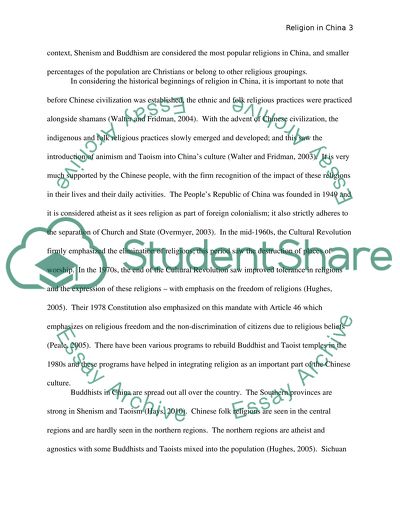Cite this document
(“Religion in China Research Paper Example | Topics and Well Written Essays - 2000 words”, n.d.)
Retrieved from https://studentshare.org/religion-and-theology/1427410-religion-in-china
Retrieved from https://studentshare.org/religion-and-theology/1427410-religion-in-china
(Religion in China Research Paper Example | Topics and Well Written Essays - 2000 Words)
https://studentshare.org/religion-and-theology/1427410-religion-in-china.
https://studentshare.org/religion-and-theology/1427410-religion-in-china.
“Religion in China Research Paper Example | Topics and Well Written Essays - 2000 Words”, n.d. https://studentshare.org/religion-and-theology/1427410-religion-in-china.


